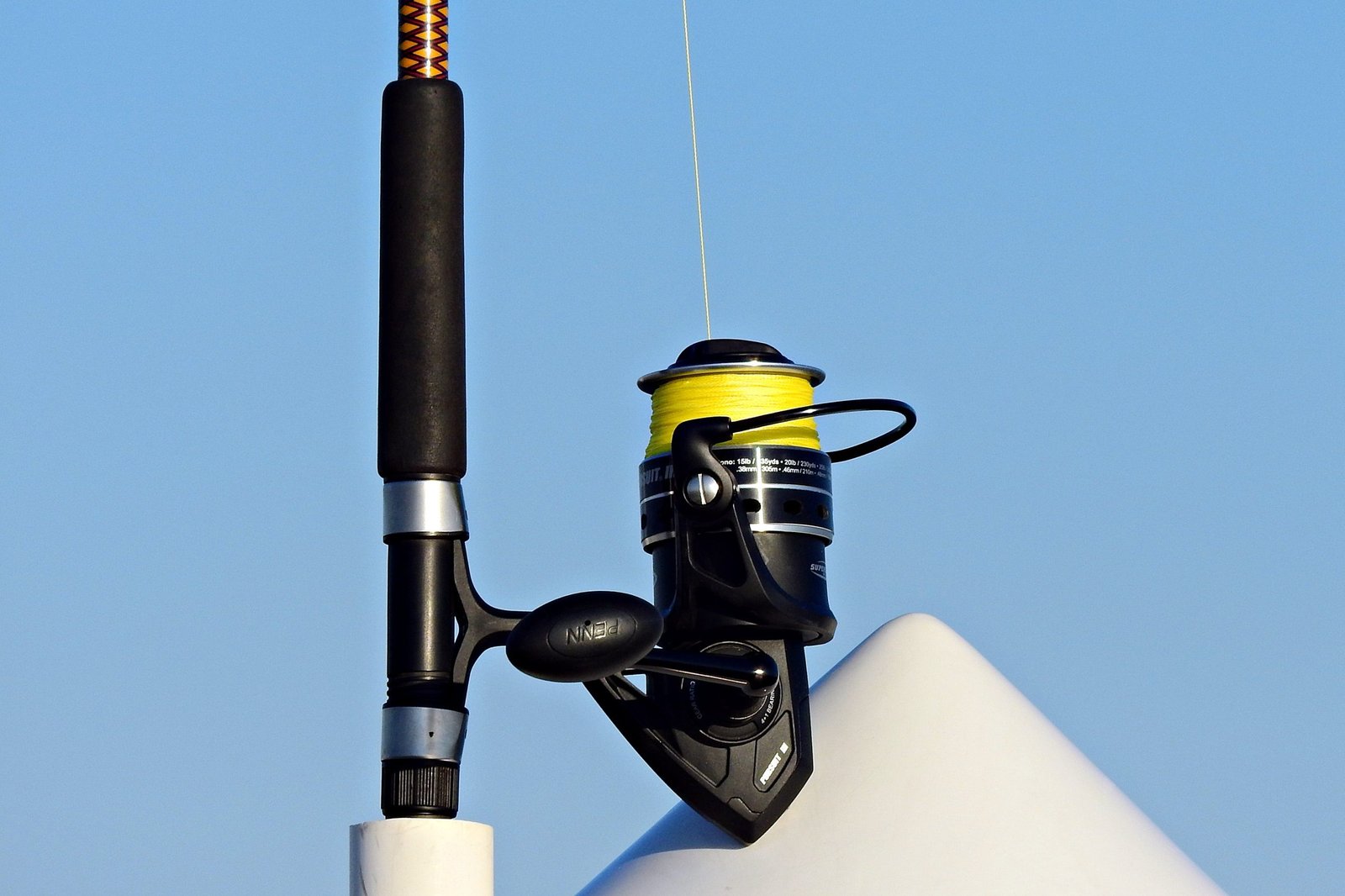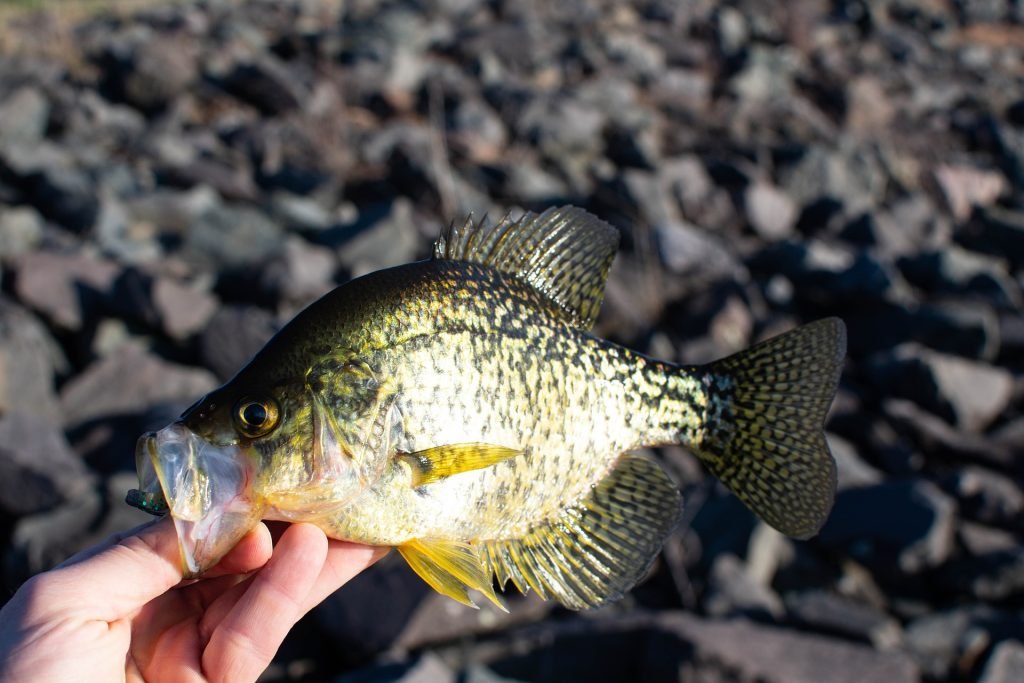
When it comes to fishing for crappie, having the right fishing line is among the most important in terms of tackle.
The right line can make all the difference in terms of sensitivity, casting distance, and hook-setting power.
In the last months, I’ve tried several light lines, with some significantly better than others.
So, in this article, I’ll be sharing my personal experience and expertise to help you find the best fishing line for crappie.

One of the most important factors to consider when choosing a fishing line for crappie is the line’s strength and diameter.
Typically, you’ll want to use a line that is around 4-6 pound test. This will allow you to feel the light bites of crappie, while still being strong enough to handle larger fish.
Monofilament lines like Berkley Trilene XL and Stren Original are popular choices for crappie fishing due to their sensitivity and low visibility in the water. Fluorocarbon lines like Seaguar InvizX and P-Line Floroclear (this one is a copolymer) are also great options, as they are virtually invisible underwater and have low stretch, which allows for better hook sets.
Now that you have a brief understanding of crappie fishing lines, let’s delve into the details.
How Do You Choose a Line for Crappie?
Line Material
The material of the fishing line is an important consideration when choosing a line for crappie fishing.
The three most common types of fishing line materials are braided, monofilament, and fluorocarbon.
Braided lines are made of multiple strands of synthetic fibers, making them very strong and durable. They are incredibly strong and have little to no stretch, which means that you can set the hook quickly and with more force. They are also very sensitive and allow you to feel even the slightest bite.
One of the drawbacks of braided lines is that they are more visible than monofilament or fluorocarbon lines, which can spook fish in clear water conditions. If you don’t have a braid-ready spool, then you’ll need to have some monofilament backing. Make sure you tie your mono to braid knots well (See FG Knot), to prevent unexpected line slips or breaks.
They also tend to be more expensive than mono. However, braided lines are an excellent choice for fishing in heavy cover and for targeting larger crappie.
Monofilament lines are made of a single strand of nylon or other synthetic material, and are known for their stretch and sensitivity.
They are the most popular type of fishing line for crappie because they are affordable, versatile, and easy to handle. Monofilament lines are available in different colors, ranging from clear to high-visibility yellow, and in various pound tests.
One of the advantages of monofilament lines is that they have some stretch, which can help prevent the hook from pulling out of the fish’s mouth. They also have good knot strength, but are more difficult to handle due to memory. However, monofilament lines are not as sensitive as fluorocarbon lines, and they can deteriorate over time, especially if exposed to sunlight.
Fluorocarbon lines are similar to monofilament lines, but are made of a denser material that is nearly invisible underwater. They are more expensive than monofilament lines, but they offer several advantages. Fluorocarbon lines are more sensitive than monofilament lines, which means that you can feel even the slightest bite. They also have less stretch, which means that you can set the hook more quickly and with more force.
One of the drawbacks of fluorocarbon lines is that they are stiffer than monofilament lines, which can make them more difficult to handle. They also tend to be more brittle and can break more easily, especially if nicked or damaged. However, fluorocarbon lines are an excellent choice for clear water conditions and for fishing in areas with heavy cover.
Line Strength
The strength of the fishing line is another important characteristic to consider. Crappie typically do not grow very large, so a line with a low pound test rating is usually sufficient. A pound test rating between 2-6 is generally recommended for crappie fishing. However, it is important to note that the strength of the line should also be balanced with the size of the lure being used. A heavier lure may require a stronger line to prevent breakage.
Line Diameter
The diameter of the fishing line is also an important consideration. A thinner line will have less resistance in the water, allowing the lure to move more naturally. However, a thinner line may also be more difficult to handle and may not be as strong as a thicker line. I would recommend anything with a diameter between 0.005-0.012 inches for crappie fishing.
Line Color
The color of the fishing line can also affect its performance. A clear or low-visibility line may be less visible to the fish, increasing the chances of a bite. However, a brightly colored line may be easier to see, making it easier to detect bites. It is important to consider the water conditions and the behavior of the fish when choosing a line color.
Now that you know what to look for in a crappie line, let’s see the best options.
1) Monofilament: Maxima Ultragreen
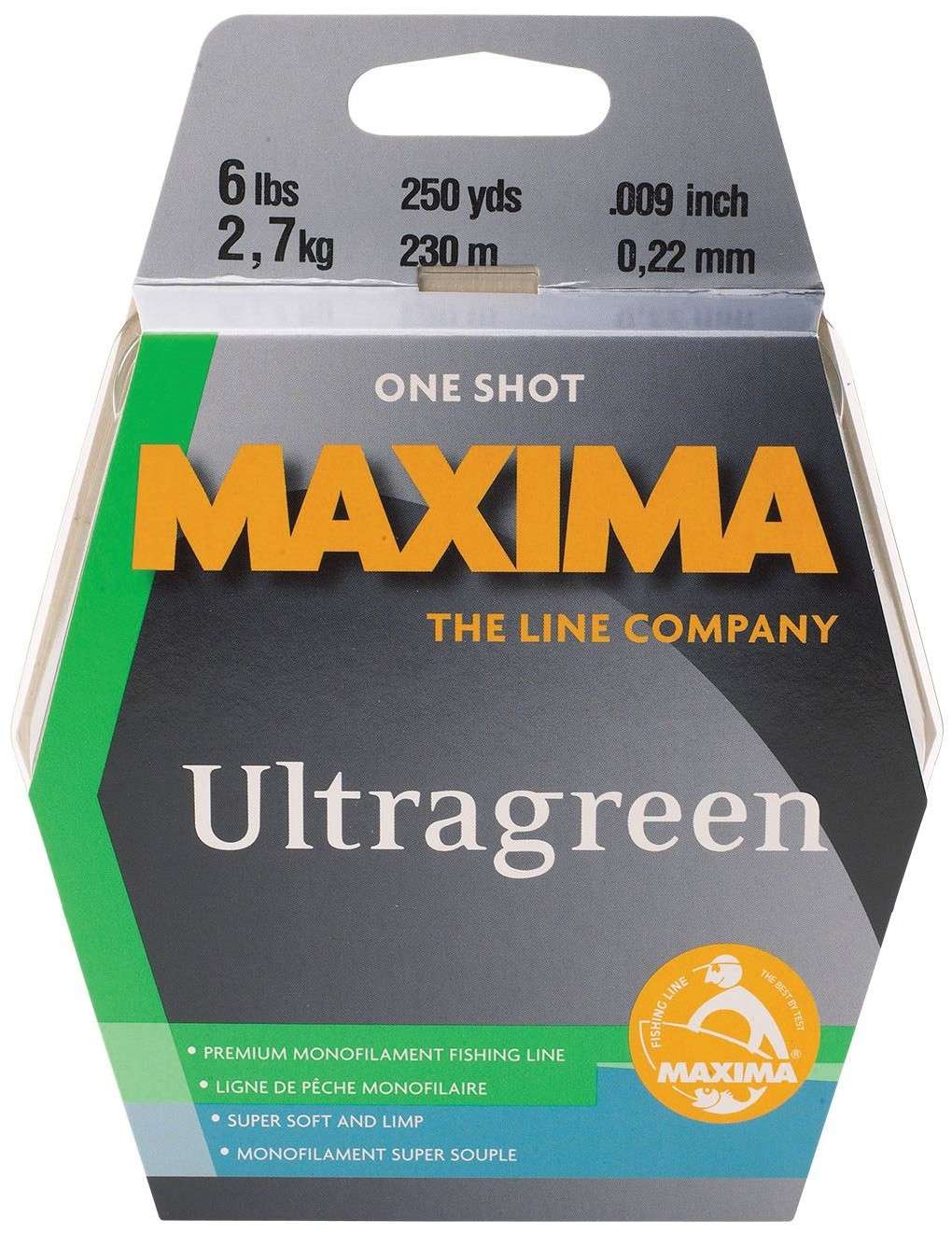
The Maxima Ultragreen monofilament line is a standout choice for crappie anglers seeking a blend of invisibility and durability. It shines in environments where abrasion resistance is crucial, withstanding the wear and tear of underwater structures that often snag and fray lesser lines.
The line’s superior knot strength is a notable feature, ensuring that your carefully tied knots hold firm in the heat of the battle with spirited crappies. Its low visibility underwater is a significant advantage, as crappie can be line-shy, and the Ultragreen’s subtle hue blends seamlessly with aquatic environments.
Additionally, its shock absorption properties are lauded, offering just enough give to absorb the initial strike and fight of a crappie without risking break-offs.
While some lines can be stiff or memory-prone, the Maxima Ultragreen maintains a pleasing suppleness, enhancing its castability and handling. Overall, it’s a reliable all-rounder that you can fish with confidence when targeting elusive crappie.
The Maxima Ultragreen is available at:
2) Fluorocarbon: Seaguar InvizX
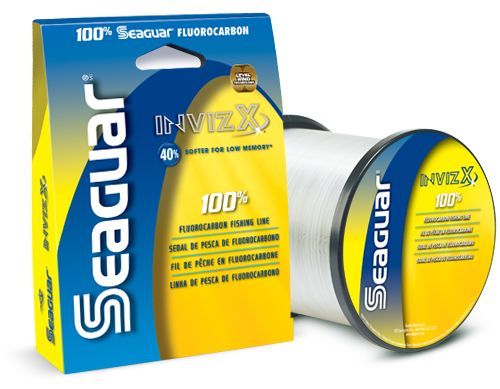
The Seaguar InvizX fluorocarbon line is a premium choice for crappie fishing enthusiasts who demand the best in terms of sensitivity and invisibility. As the name suggests, InvizX is nearly invisible underwater, a critical attribute when targeting the often finicky crappie. This low visibility helps in clear water conditions where crappie may be more line-wary. The line’s fluorocarbon material also offers a high level of sensitivity, allowing you to feel the subtlest nibbles and strikes, which is essential for detecting the light bite of a crappie.
Moreover, the Seaguar InvizX boasts impressive knot strength and abrasion resistance, ensuring that it holds up well against structures and the occasional rough handling. It’s also noted for having less memory than some other fluorocarbon lines, which contributes to better castability and reduced line twists. While it may come at a higher price point, many anglers find the performance benefits of the Seaguar InvizX to be well worth the investment for serious crappie fishing.
The Seaguar InvizX is available at:
3) Braid: FINS Crappie Braid
The FINS Crappie Braid line is a game-changer for anglers targeting crappie with artificial lures or live bait. Its ultra-thin diameter is a standout feature, allowing for stealthy presentations and the ability to spool more line onto your reel. Despite this thinness, the line is incredibly strong and durable, offering the confidence to pull fish out of heavy cover without fear of breakage. The no-stretch quality of the braid translates to exceptional sensitivity; you’ll feel every tap and bump, which is crucial for detecting the often light bite of a crappie.
Another advantage of the FINS Crappie Braid is its castability. The line flows smoothly off the reel, enabling precise and long-distance casts. Anglers also appreciate its resistance to wind knots, which can be a common annoyance with some braided lines. While color fading can occur over time, it does not affect the line’s performance. Overall, FINS Crappie Braid is a solid choice for those who prefer the advantages of braid when pursuing crappie.
The FINS Crappie Braid is available at:
4) Best All-Around Line: P-Line Floroclear
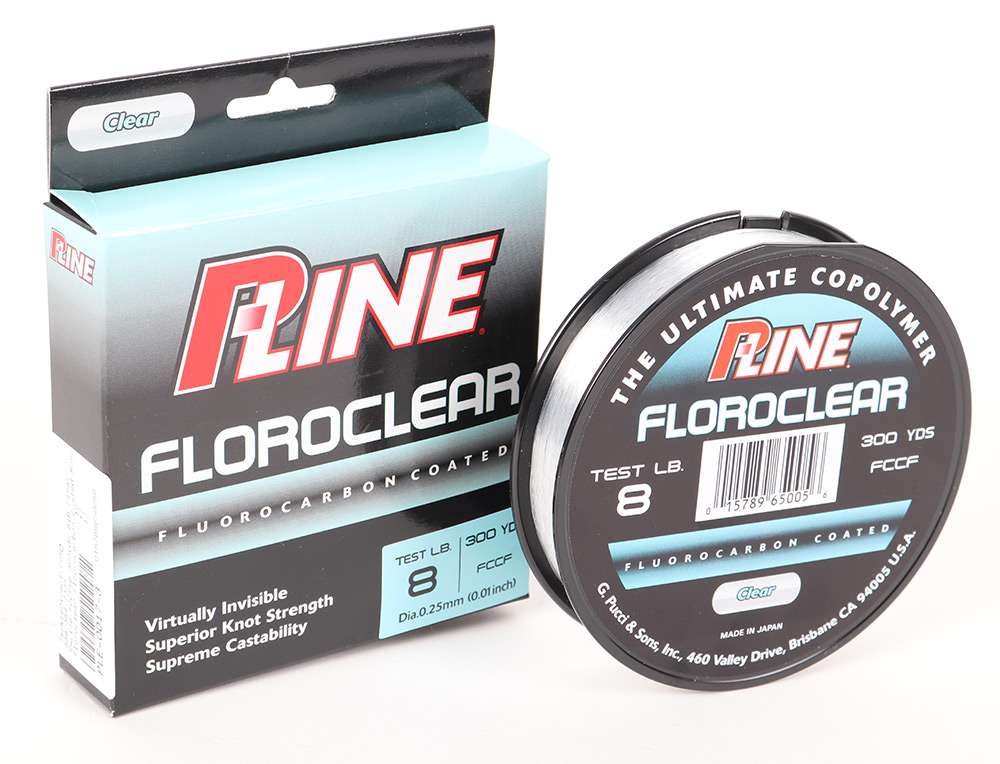
The P-Line Floroclear copolymer line is a popular choice among crappie anglers for its unique blend of manageability, invisibility, and durability. This line combines the best attributes of both monofilament and fluorocarbon lines, offering a lower visibility in water akin to pure fluorocarbon with the flexibility and knot strength that monofilament is known for. Anglers report that the Floroclear has a thinner diameter compared to other lines with similar strength, which can be a significant advantage when finesse fishing for crappie.
The line’s suppleness aids in reducing memory, which means fewer tangles and smoother casts, a feature that is especially appreciated when using lighter lures. Moreover, the P-Line Floroclear’s exterior fluorocarbon coating not only reduces the line’s visibility but also enhances its abrasion resistance, making it a robust option for fishing around structures where crappie often reside. Its versatility and performance make it a well-rounded line suitable for various crappie fishing techniques.
The P-Line Floroclear is available at:
5) Best Budget Line: Stren Original Monofilament
The Stren Original monofilament line is a tried-and-true favorite for budget-conscious crappie anglers who do not want to compromise on quality. As a monofilament, it naturally offers excellent buoyancy which is ideal for presenting live baits and jigs at the desired depth. Its high knot strength is a significant advantage, ensuring that even the most intricate knots stay secure during critical moments of the catch.
What sets the Stren Original apart in its price range is its exceptional balance of toughness and manageability. It resists abrasion well, which is essential when fishing around structures, and it has enough give to absorb the shock of a sudden crappie strike, reducing the risk of line breaks.
You’ll also appreciate its low memory, which minimizes twists and kinks, allowing for smooth casting and retrieval. For those seeking a reliable, all-purpose line that performs consistently without breaking the bank, the Stren Original monofilament is a standout choice.
The Stren Original is available at:
Frequently Asked Questions
What are the advantages of using braided line for crappie fishing?
Braided line is a popular choice for crappie fishing because of its strength and sensitivity. It has a smaller diameter than monofilament line of the same strength, which allows for longer casts and better sensitivity. Braided line also has minimal stretch, which means you can feel every bite and set the hook quickly. This is especially important when crappie fishing, as they have a tendency to nibble on bait rather than taking a full bite.
How does line color impact crappie fishing success?
The color of your fishing line can have a significant impact on your success when targeting crappie. Clear or low-visibility lines are often preferred because they are less likely to spook the fish. However, some anglers prefer to use colored lines to help them see the line better in low light conditions. In general, it’s best to match the color of your line to the water you are fishing in.
What is the ideal line weight for targeting crappie?
The ideal line weight for crappie fishing depends on a few factors, including the size of the fish you are targeting and the type of bait you are using. In general, a 4-6 pound test line is a good choice for crappie fishing. However, if you are targeting larger fish or using heavier baits, you may need to use a heavier line.
Which is preferable for crappie fishing: monofilament or fluorocarbon line?
Both monofilament and fluorocarbon lines can be effective for crappie fishing. Monofilament lines are generally more affordable and have more stretch, which can be beneficial when fishing with live bait. Fluorocarbon lines are more expensive but have less stretch and are more sensitive, making them a good choice for fishing with artificial lures.
How does line visibility affect crappie’s behavior?
Crappie are known for their skittish behavior, and line visibility can play a role in whether or not they will bite. If the fish can see your line, they may be less likely to take your bait. This is why clear or low-visibility lines are often preferred when targeting crappie.
What are the key components of an effective crappie fishing setup?
An effective crappie fishing setup includes a lightweight rod and reel, a small hook, and a bobber or float. Live bait, such as minnows or worms, is often preferred, but artificial lures can also be effective. It’s important to use a line that is appropriate for the size of the fish you are targeting and the type of bait you are using.


